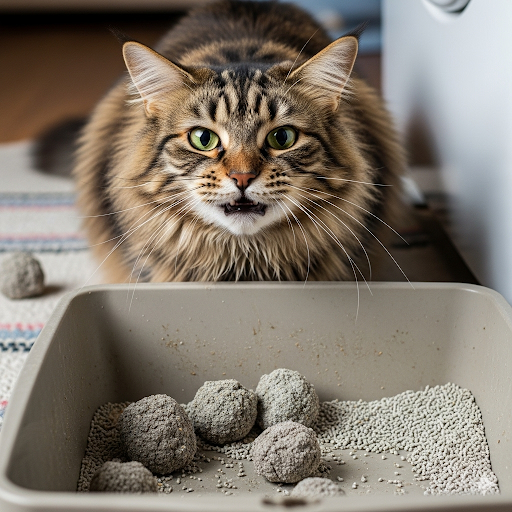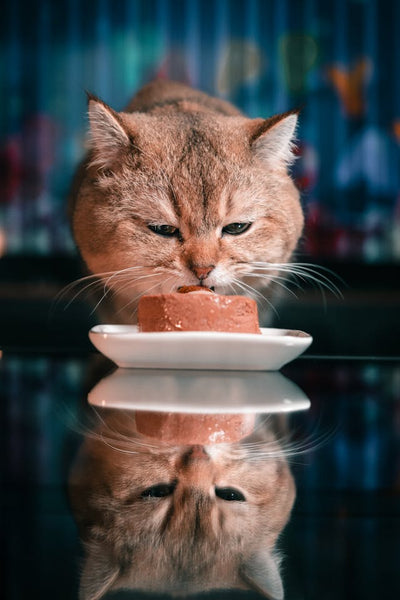
Cat owners around the world can attest to this phenomenon: the uncanny ability of their feline companions to materialize with perfect timing, just as dinnertime approaches, or to nudge your hand insistently moments before your alarm clock screams. But how do these furry friends, who seemingly spend most of their days napping in sunbeams, possess such an accurate internal clock?
The answer lies not in a tiny wristwatch strapped to their paw, but in a fascinating interplay between biology, routine, and environmental cues.
The Internal Compass: A Cat's Circadian Rhythm
Just like humans, cats have a built-in biological clock known as the circadian rhythm. This complex system, present in most living organisms, regulates various bodily functions on a roughly 24-hour cycle. In cats, the circadian rhythm influences sleep patterns, hormone production, and even activity levels.
Exposure to sunlight plays a crucial role in setting this internal clock. As dawn breaks, light signals received by the eyes trigger the release of hormones like cortisol, which increases alertness and energy levels. Conversely, as darkness falls, melatonin production ramps up, promoting sleepiness and relaxation.
This internal rhythm provides a foundation for cats' sense of time. They inherently anticipate changes in light levels and adjust their behavior accordingly.
The Power of Habit: Routine as a Timekeeper
Cats are creatures of habit. They thrive on predictable routines, and this includes mealtimes. When you consistently feed your cat at specific times each day, their internal clock becomes finely tuned to these intervals.
Imagine your cat's day as a series of anticipated events: breakfast, playtime, a sunbeam nap, and then... dinner! As the day progresses, internal hunger cues and a subconscious awareness of the routine nudge your cat towards the expected feeding time.
This is why cats often appear right at your feet just before dinner, even if you haven't started preparing it yet. Their bodies are sending hunger signals, and their internal clock tells them dinner time is drawing near.
Environmental Cues: Light, Sounds, and Your Schedule
Beyond the internal compass and established routines, cats are keen observers of their environment. They pick up on subtle cues that signal the passage of time.
Changes in daylight are a significant indicator. As the afternoon sun dips lower, casting long shadows, your cat might interpret this as a sign that dinner is approaching.
Sounds can also be timekeepers. The clatter of dishes being put away after breakfast might trigger an association with the upcoming dinner routine. Even your own pre-dinner rituals, like putting on shoes or heading towards the kitchen, can become ingrained cues for your feline friend.
Can Cats Tell Time Like Humans?
It's important to understand that cats don't possess the same concept of time as humans. They can't read clocks or understand the abstract notion of minutes or hours.
However, their remarkable ability to combine their internal clock with environmental cues and learned routines allows them to develop a highly accurate sense of the passage of time, relative to their own needs and expectations.
The Benefits of a Feline Timekeeper
While a cat's insistence on dinner punctuality might seem like mere nagging, their internal clock can be a valuable asset. Here's how:
- Routine provides security: Predictable routines create a sense of security and stability for cats, who are naturally cautious creatures. Knowing when to expect meals, playtime, and even your return home reduces stress and fosters a calmer environment.
- Aids digestion: Maintaining consistent mealtimes helps regulate your cat's digestive system, promoting better nutrient absorption and overall health.
- Early warning system: Sometimes, a cat's sudden change in behavior, like increased vocalization around mealtime, can be an indicator of underlying health issues. Paying attention to their internal clock can help you identify potential problems early on.
Keeping Your Cat's Timekeeper in Tune
While cats are naturally skilled at keeping track of time, here are some tips to further support their internal clock:
- Maintain consistent routines: Try to feed your cat at the same times each day, even on weekends. This helps keep their internal rhythm synchronized.
- Minimize disruptions: Sudden changes in schedule, like traveling or overnight guests, can throw your cat's internal clock off balance. Provide familiar objects and routines during disruptions to minimize stress.
- Embrace natural light: Allowing your cat access to natural sunlight throughout the day helps regulate their circadian rhythm.
The Feline Timekeeper: A Testament to Adaptation
A cat's ability to navigate time may not involve reading clocks, but it reflects a remarkable adaptation to their environment and their dependence on human interaction. By understanding the interplay between biology, routine, and environmental cues, we can appreciate the sophisticated internal clock that drives our feline companions' uncanny sense of time.
Beyond Dinnertime: The Feline Timekeeper's Many Faces
While dinnertime is a prime example of a cat's internal clock in action, their timekeeping skills extend beyond meal anticipation. Here are some fascinating ways cats demonstrate their awareness of time:
- The Playful Programmer: Many cat owners observe their feline companions exhibiting bursts of energy at specific times of the day, often in the evening or early morning. This can be attributed to their natural crepuscular tendencies. Cats are most active during twilight hours, and their internal clocks trigger these playful episodes accordingly.
- The Patient Hunter: Cats are ambush predators by nature. They excel at waiting patiently for the opportune moment to strike. This ability to remain still and focused for extended periods can be partly attributed to their internal sense of time. They can gauge how long it takes for prey to appear or a human to return home, demonstrating a remarkable capacity for temporal awareness.
- The Separation Anxiety Specialist: Cats who experience separation anxiety often become more vocal or restless as their human companion's departure time approaches. Their internal clock picks up on cues associated with leaving, like grabbing keys or putting on shoes, triggering anxiety in anticipation of being alone.
The Ongoing Conversation: Unveiling the Feline Mind
Understanding how cats perceive time offers a unique window into their fascinating minds. Their ability to integrate biological rhythms with environmental cues and learned routines highlights a level of cognitive sophistication that continues to surprise researchers.
As we delve deeper into feline behavior, new discoveries are constantly being made. Here are some intriguing questions that continue to spark scientific curiosity:
- Can cats differentiate between short and long time intervals?
- Do they possess any sense of seasonal changes or the passage of weeks/months?
- How does their perception of time differ between indoor and outdoor cats?
Further research into these questions promises to shed even more light on the remarkable cognitive abilities of our feline companions.
Conclusion: Living with a Feline Timekeeper
Sharing your life with a cat means appreciating their unique way of experiencing the world. Their finely tuned internal clocks, combined with keen observation skills, allow them to navigate time in a way that may seem mysterious but is nonetheless impressive.
By acknowledging their timekeeping abilities and maintaining consistent routines, we can foster a more harmonious relationship with our feline friends. After all, a happy cat is a cat whose internal clock is in sync with the world around them, and a world where dinner appears precisely when anticipated.



